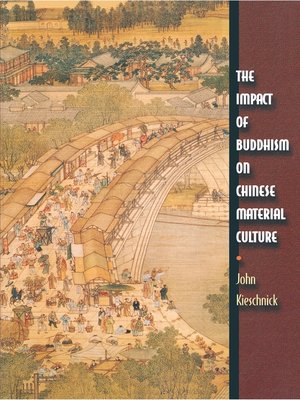The Impact of Buddhism on Chinese Material Culture
ebook ∣ Buddhisms: a Princeton University Press Series
By John Kieschnick

Sign up to save your library
With an OverDrive account, you can save your favorite libraries for at-a-glance information about availability. Find out more about OverDrive accounts.
Find this title in Libby, the library reading app by OverDrive.



Search for a digital library with this title
Title found at these libraries:
| Library Name | Distance |
|---|---|
| Loading... |
From the first century, when Buddhism entered China, the foreign religion shaped Chinese philosophy, beliefs, and ritual. At the same time, Buddhism had a profound effect on the material world of the Chinese. This wide-ranging study shows that Buddhism brought with it a vast array of objects big and small—relics treasured as parts of the body of the Buddha, prayer beads, and monastic clothing—as well as new ideas about what objects could do and how they should be treated. Kieschnick argues that even some everyday objects not ordinarily associated with Buddhism—bridges, tea, and the chair—on closer inspection turn out to have been intimately tied to Buddhist ideas and practices. Long after Buddhism ceased to be a major force in India, it continued to influence the development of material culture in China, as it does to the present day.
At first glance, this seems surprising. Many Buddhist scriptures and thinkers rejected the material world or even denied its existence with great enthusiasm and sophistication. Others, however, from Buddhist philosophers to ordinary devotees, embraced objects as a means of expressing religious sentiments and doctrines. What was a sad sign of compromise and decline for some was seen as strength and versatility by others. Yielding rich insights through its innovative analysis of particular types of objects, this briskly written book is the first to systematically examine the ambivalent relationship, in the Chinese context, between Buddhism and material culture.







